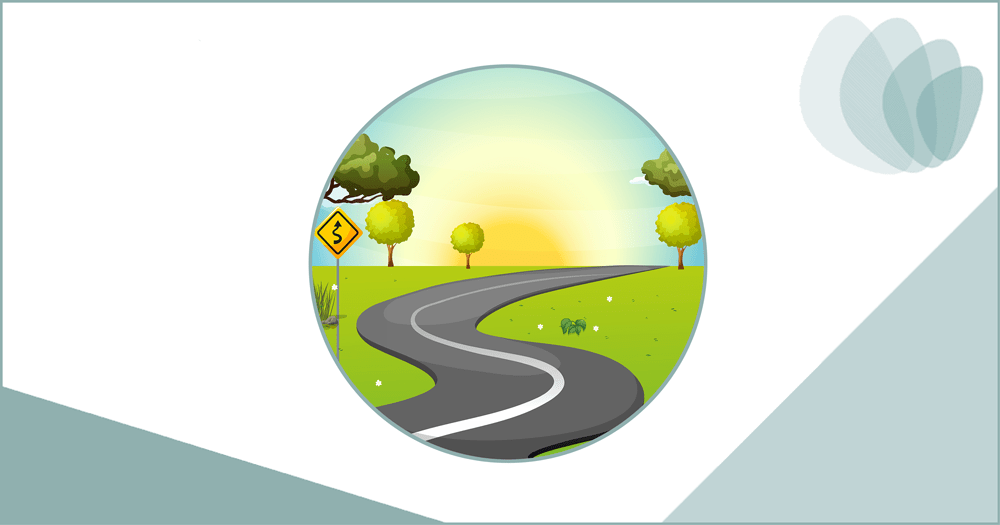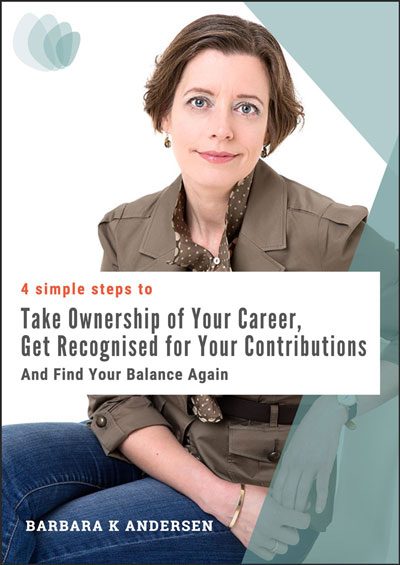Happy UN Career Podcast / Episode 4
How Was Your Career Journey?
Subscribe to the Podcast
Episode 4 / 23 September 2020
SHOW NOTES
Hello, and welcome to this 3rd episode in a small series I’ve called: “What Drives You and What Drains You?”.
In the previous episode, I talked about how you can learn a lot of details about what motivates you and what drains you from your daily work life. That was episode 3, which you can find at barbarakandersen.com/3.
Today, I’ll show you how to take a long-distance view and get a bigger perspective. Because you’re going to take a look at (and hopefully appreciate!) everything you’ve done in your career so far.
A Trip Down Memory Lane
One of the most popular exercises I use with my clients when we work on their career and work situation is one I call “The Career Journey”.
My clients like it because it’s a very positive exercise that allows you to remember and rediscover all your achievements, the problems you’ve overcome, the challenges you worked through, the great people you met, etc.
And I enjoy guiding my clients in the exercise because it invariably brings smiles to their eyes and pride in their voices when they take me through some of the important highlights of their career and life choices.
The thing is, that in our day-to-day work we’re so busy focussing on all the boxes we still haven’t checked. The things on the to-do list we still haven’t done and everything else that’s not yet been achieved.
And with our eyes fixed on that, we completely lose sight of everything that we have done, all the things we have achieved in life and work. The challenges we’ve overcome. The projects and tasks we succeeded in.
When you shine a light on everything you’ve done in your past there’s normally a lot of pride, motivation and energy you can reap from it. Pride and energy that can help you in your journey going forward.
And there is also a lot you can learn – or rediscover – about yourself. About your values, your strong points, and the things that drive you. Things you really should take forward. Because the essential elements of your good work experiences (and the less great ones) are key also for what gives you a happy work-life today.
Get Creative
It’s a visual exercise and if you’re just a bit of the creative kind it’ll spark your artistic energies.
But don’t worry, even if you don’t consider yourself creative at all, it’s an easy exercise that will give you a great overview. And this time you’ll do it all in one go – there’s no need to carry a log with you.
How to: Map Out Your Career Journey
- It’d be great if you can get some flipchart paper. Or use a whiteboard.For almost any kind of reflection exercise I always advise that you get up from your computer and work on a flipchart or a whiteboard.It’s really helpful to put your thoughts out there on the wall for you to look at. It’s a way of externalising your ideas so that you can get a better perspective on them.There is also a physical thing that happens when you stand up and look at the paper instead of sitting down in front of your computer screen. And this helps you get more creative and see new perspectives.
- If you don’t have access to flip chart paper or a whiteboard, try to get your hands on some A3 paper and tape it onto a door or a window where you have a flat surface to write on.And failing all else, just tape together two pieces of A4 paper that you place next to each other, lying down.
- Now you draw a timeline starting down in the bottom left corner and going upwards to the right – ending with an arrow up in the top right corner.
- On the timeline, mark important events such as when you started working the first time (maybe already as a teenager?), your high school graduation, university studies and maybe other important training. And, most importantly, of course, all your jobs in between. Include also important life events if it feels relevant.
- Under the timeline you write the year of the job or event.
- Above the timeline you write the organisation and your title.
- Now you have a basic timeline and overview of all jobs and other important factors in your career until now.
- So now is the time to mark the highlights. And this is where it becomes useful to have plenty of space to work on. Use circles, boxes, arrows, colours, etc. to help visualise your experience.
- Write for example the name of a great supervisor? Or a favourite colleague. The title of a particularly important project?
- Think about what were the best parts of that specific job? And why? Was it certain tasks? The fact that you had a lot of autonomy? Or authority? Or was it the people? Why – what were they like? Etc. You get the picture.
- If there were major low points, you may also want to add these, but put them under the timeline. You might want to put a few keywords about why they were low points.But the overall idea of the exercise is to look for the highlights and experiences that you feel good about!
You should give yourself at least an hour to work on this. Consider borrowing a meeting room at work or hang flip chart paper in your living room at home. Play nice music and make a good cup of coffee – or allow yourself some other treat that will help make this a pleasurable exercise.
It’s an exercise that has the potential to be both fun and interesting if you allow it!
Invite a good friend or a close colleague to join you. Or maybe your partner would be interested in joining in? It can be really valuable to get an outside perspective and you can help each other suss out all the interesting clues from your work in the past.
Look for patterns
And make sure you draw out all the learning from each experience:
I was happy in that job. Why is that? Was it:
- The people I worked with?
- That the mission was particularly meaningful?
- The ability to be effective and get results?
- That I had a lot of autonomy and freedom in my work?
- Or that there was just enough structure and feedback that I felt comfortable that I was on the right track and could get help if I needed it?
- Was it the specific tasks that I felt engaged and motivated by?
- Or was it because in that duty station I had a great network and an active social life that made days feel rich?
- And so on…
The same way as we did with the time log last time, be curious to look for patterns in your best experiences:
- Did you for example have a supervisor that was particularly supportive – or who allowed you to take responsibility and run with your own projects without micromanagement?
- Did you have a good network that helped you expand and feel supported both at work and outside work?
- Were you able to really get into the subject matter and develop expertise?
- Did you have a great balance between work and private life that allowed you to make the most of the experience of your duty station, while also enjoying the professional experience and making strides at work?
Next step
When you’re done, take a step back and have a look at your Career Journey Map. Look at the big picture.
This is your career until today.
What does it tell you about how you want your career and work-life to look from now on and until your retirement?
If you want to take this further, write down your 3 most important takeaways from the exercise about what is important for you in your career going forward.
Good questions to get you started could be:
- What are you proud of in yourself and how can you take this forward with you?
- What is the most important circumstance for you to be happy in your job?
- When do you perform the best?
Think about, what could be one concrete thing you can take action on (maybe this week?) to make sure that you keep – or get more of one thing that makes you happy in your job?
What small, concrete thing can you do to move towards changing something that is not working for you today?
So – that’s the Career Journey for you!
Remember, if you want to review what we’ve talked about today, check out the full show notes at Barbarakandersen.com/4. There you can find all the details of what I talked about today – and the steps I’ve just described. Again, that’s Barbarakandersen.com/4.
So, What’s the Next Step?
In the next episode, I’ll talk about a topic that has come up a lot lately in conversations with clients – the issue of feeling stuck. In your job, in your career – the feeling of not having options. A very unpleasant place to be.
And as usual, I will of course offer my perspective on how you can get yourself unstuck. Create options and possibilities. And a way forward!




